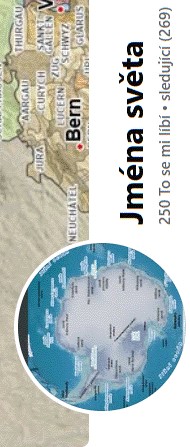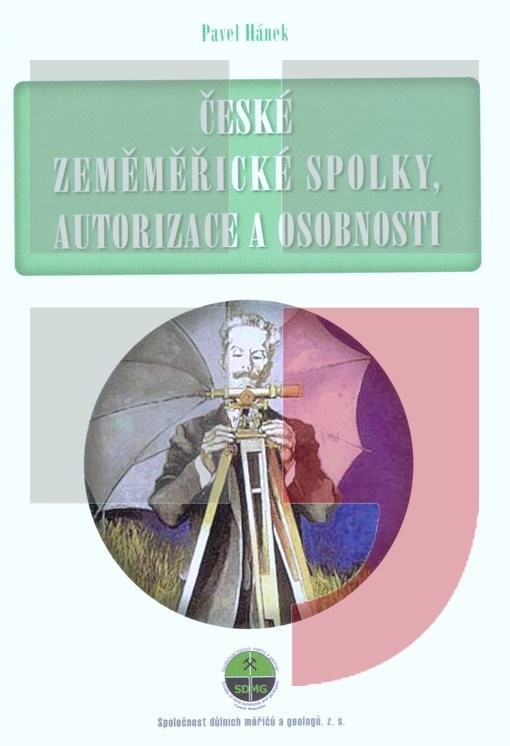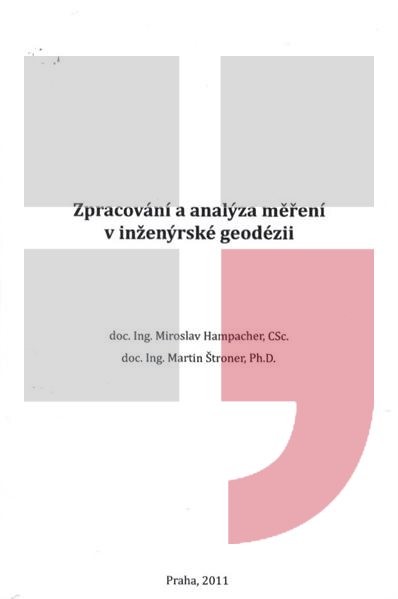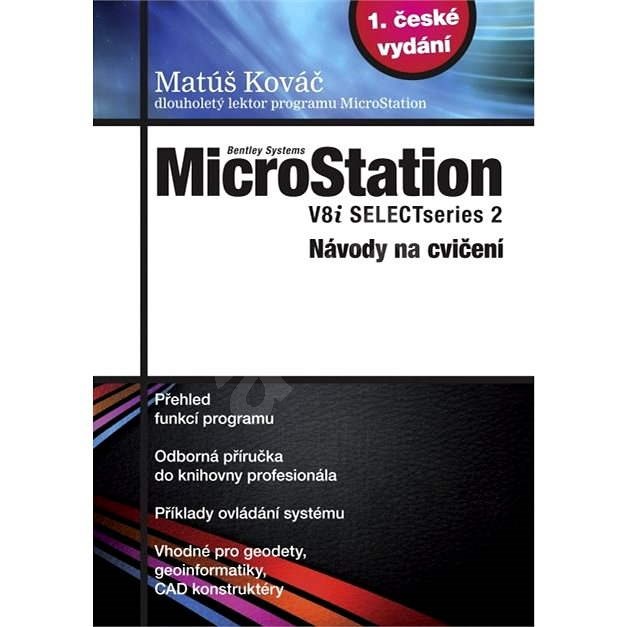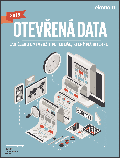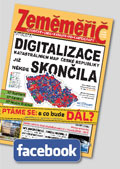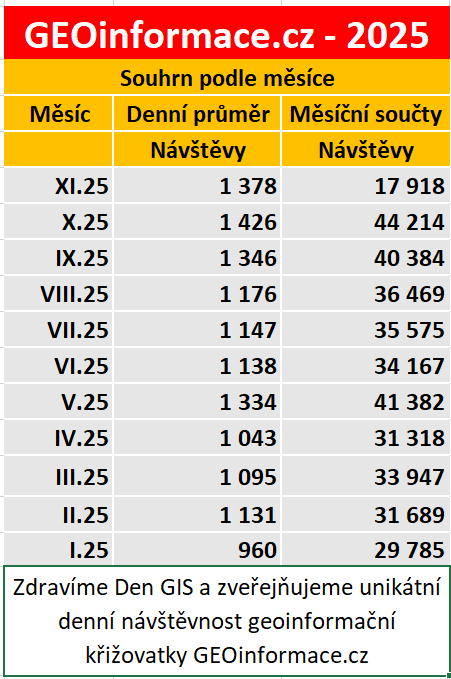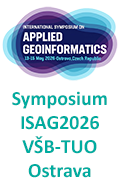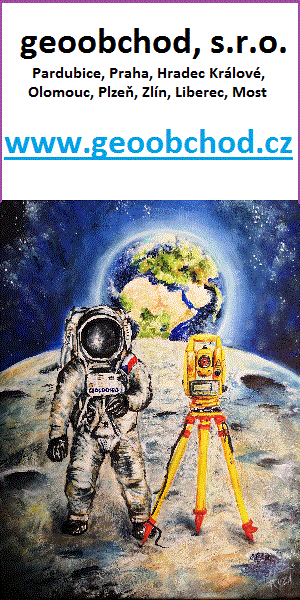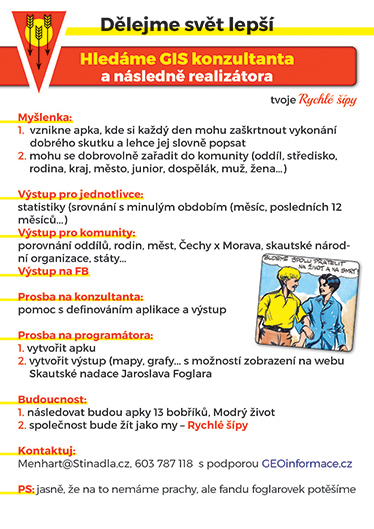zprávy
zdroje zpráv:Vedoucí oddělení právních vztahů k nemovitostem Katastrálního pracoviště Jindřichův Hradec
8.2.2016 7:24 ČÚZK - předpisy a opatření /Urady/Katastralni-urady/Katastralni-urady/Katastralni-urad-pro-Jihocesky-kraj/Uredni-deska/Oznameni-a-jina-uredni-sdeleni/Volna-mista/Vedouci-oddeleni-pravnich-vztahu-k-nemovitoste-(2)Vedoucí oddělení právních vztahů k nemovitostem Katastrálního pracoviště Český Krumlov
8.2.2016 7:20 ČÚZK - předpisy a opatření /Urady/Katastralni-urady/Katastralni-urady/Katastralni-urad-pro-Jihocesky-kraj/Uredni-deska/Oznameni-a-jina-uredni-sdeleni/Volna-mista/vedouciho-oddeleni-pravnich-vztahu-k-nemovitostemVedoucí oddělení právních vztahů k nemovitostem Katastrálního pracoviště Český Krumlov
8.2.2016 7:20 ČÚZK /Urady/Katastralni-urady/Katastralni-urady/Katastralni-urad-pro-Jihocesky-kraj/Uredni-deska/Oznameni-a-jina-uredni-sdeleni/Volna-mista/vedouciho-oddeleni-pravnich-vztahu-k-nemovitostemVedoucí oddělení právních vztahů k nemovitostem Katastrálního pracoviště Český Krumlov
8.2.2016 7:20 ČÚZK - volná místa /Urady/Katastralni-urady/Katastralni-urady/Katastralni-urad-pro-Jihocesky-kraj/Uredni-deska/Oznameni-a-jina-uredni-sdeleni/Volna-mista/vedouciho-oddeleni-pravnich-vztahu-k-nemovitostem51. geodetické informační dny
8.2.2016 7:00 Česká asociace pro geoinformaceSpolek zeměměřičů Brno
si Vás dovoluje pozvat na
51. GEODETICKÉ INFORMAČNÍ DNY
které se konají v Brně
24.– 25. ÚNORA 2016
Hotel AVANTI, Střední 61, Brno
Spolek zeměměřičů Brno si Vás dovoluje pozvat na 51. GEODETICKÉ INFORMAČNÍ DNY, které se konají v Brně (24.– 25. ÚNORA 2016, Hotel AVANTI, Střední 61, Brno).
Více informací, včetně programu,
ÚAP - povinné jevy - polygonové určení ochrany
8.2.2016 1:00 Cenia - Katalog metadat ČR - INSPIRE Prostorové (polygonové) vymezení ochrany pro územně-analytické podklady.ÚAP - povinné jevy - bodové určení
8.2.2016 1:00 Cenia - Katalog metadat ČR - INSPIRE Služba obsahující bodová určení povinných jevů pro územně-analytické podklady.ÚAP - povinné jevy - bodové určení ochrany
8.2.2016 1:00 Cenia - Katalog metadat ČR - INSPIRE Služba obsahující bodová určení povinných jevů pro územně-analytické podklady.ÚAP - povinné jevy - prostorové vymezení ochrany
8.2.2016 1:00 Cenia - Katalog metadat ČR - INSPIRE Prostorové (polygonové) vymezení ochrany pro územně-analytické podklady.Přednáška zrušena
7.2.2016 22:09 Katedra geoinformatiky UP Olomouc Úterní přednáška dr. Michala Bíla je z důvodu nemoci zrušena. Sledujte aktuality KGI, co nevidět bude oznámen náhradní termín.ArcGIS Roll-out 2017
7.2.2016 7:00 Česká asociace pro geoinformace Chcete se dozvědět jak využívat ArcGIS efektivněji? Chcete se dozvědět o nových funkcích a vylepšeních? Doraže v lednu na některou z českých univerzít, kde budou ARCDATA PRAHA pořádat semináře ArcGIS Roll-out 2017.Více informací, termíny a místa akcí naleznete na webu ARCDATA
Náš svět v datech
7.2.2016 7:00 Česká asociace pro geoinformace Data z celého světa z rozličných oblastí v tabulkách, grafech a hlavně na mapách - to je web Our World In Data, který si klade za cíl ukázat, jak se mění životní podmínky na Zemi v průběhuAhoj svet!
6.2.2016 14:54 Leica Tour SKVitajte vo WordPress. Toto je váš prvý článok. Môžete ho upraviť alebo vymazať a potom už len začať písať!
Príspevok Ahoj svet! zobrazený najskôr Leica Tour 2022.
Ahoj svet!
6.2.2016 14:54 Leica Tour SKVitajte vo WordPress. Toto je váš prvý článok. Môžete ho upraviť alebo vymazať a potom už len začať písať!
Príspevok Ahoj svet! zobrazený najskôr Leica Tour 2020.
Ahoj svet!
6.2.2016 14:54 Leica Tour SKVitajte vo WordPress. Toto je váš prvý článok. Môžete ho upraviť alebo vymazať a potom už len začať písať!
Príspevok Ahoj svet! zobrazený najskôr Leica Tour 2020.
Ahoj svet!
6.2.2016 14:54 Leica Tour SKVitajte vo WordPress. Toto je váš prvý článok. Môžete ho upraviť alebo vymazať a potom už len začať písať!
Príspevok Ahoj svet! zobrazený najskôr Leica Tour 2023.
Ahoj svet!
6.2.2016 12:54 Leica Tour SKVitajte vo WordPress. Toto je váš prvý článok. Môžete ho upraviť alebo vymazať a potom už len začať písať!
Príspevok Ahoj svet! zobrazený najskôr Leica Tour 2018.
Ahoj svet!
6.2.2016 12:54 Leica Tour SKVitajte vo WordPress. Toto je váš prvý článok. Môžete ho upraviť alebo vymazať a potom už len začať písať!
Príspevok Ahoj svet! zobrazený najskôr Leica Tour 2019.
BIM May Have a Role in First Hyperloop Test Track
5.2.2016 21:53 Bentley SystemsPress Coverage
Engineering.com
Read the articleDanish Road Directorate Employs Digital Design and Construction to Improve Collaboration and Save Costs
5.2.2016 16:56 Bentley SystemsPress Coverage
Informed Infrastructure
Read the articleMission teams prepare for critical days
5.2.2016 15:47 ESA Observing the Earth
Moments after Sentinel-3A separates from its rocket, a team of European mission control specialists will assume control, shepherding the new spacecraft through its critical first days in space.
Obnova katastrálního operátu – odborný referent
5.2.2016 13:22 ČÚZK - volná místa /Urady/Katastralni-urady/Katastralni-urady/Katastralni-urad-pro-Moravskoslezsky-kraj/Uredni-deska/Oznameni-a-jina-uredni-sdeleni/Volna-mista/Obnova-katastralniho-operatu-–-odborny-referentObnova katastrálního operátu – odborný referent
5.2.2016 13:22 ČÚZK - předpisy a opatření /Urady/Katastralni-urady/Katastralni-urady/Katastralni-urad-pro-Moravskoslezsky-kraj/Uredni-deska/Oznameni-a-jina-uredni-sdeleni/Volna-mista/Obnova-katastralniho-operatu-–-odborny-referentObnova katastrálního operátu – odborný referent
5.2.2016 13:22 ČÚZK /Urady/Katastralni-urady/Katastralni-urady/Katastralni-urad-pro-Moravskoslezsky-kraj/Uredni-deska/Oznameni-a-jina-uredni-sdeleni/Volna-mista/Obnova-katastralniho-operatu-–-odborny-referentZápisy řízení V a Z – odborný referent
5.2.2016 13:19 ČÚZK - předpisy a opatření /Urady/Katastralni-urady/Katastralni-urady/Katastralni-urad-pro-Moravskoslezsky-kraj/Uredni-deska/Oznameni-a-jina-uredni-sdeleni/Volna-mista/Zapisy-rizeni-V-a-Z-–-odborny-referent-(1)Zápisy řízení V a Z – odborný referent
5.2.2016 13:19 ČÚZK - volná místa /Urady/Katastralni-urady/Katastralni-urady/Katastralni-urad-pro-Moravskoslezsky-kraj/Uredni-deska/Oznameni-a-jina-uredni-sdeleni/Volna-mista/Zapisy-rizeni-V-a-Z-–-odborny-referent-(1)Zápisy řízení V a Z – odborný referent (1)
5.2.2016 13:19 ČÚZK - volná místa /Urady/Katastralni-urady/Katastralni-urady/Katastralni-urad-pro-Moravskoslezsky-kraj/Uredni-deska/Oznameni-a-jina-uredni-sdeleni/Volna-mista/Zapisy-rizeni-V-a-Z-–-odborny-referent-(1)Zápisy řízení V a Z – odborný referent
5.2.2016 13:19 ČÚZK /Urady/Katastralni-urady/Katastralni-urady/Katastralni-urad-pro-Moravskoslezsky-kraj/Uredni-deska/Oznameni-a-jina-uredni-sdeleni/Volna-mista/Zapisy-rizeni-V-a-Z-–-odborny-referent-(1)Zápisy řízení V a Z – odborný referent (1)
5.2.2016 13:19 ČÚZK /Urady/Katastralni-urady/Katastralni-urady/Katastralni-urad-pro-Moravskoslezsky-kraj/Uredni-deska/Oznameni-a-jina-uredni-sdeleni/Volna-mista/Zapisy-rizeni-V-a-Z-–-odborny-referent-(1)Zápisy řízení V a Z – odborný referent
5.2.2016 13:15 ČÚZK /Urady/Katastralni-urady/Katastralni-urady/Katastralni-urad-pro-Moravskoslezsky-kraj/Uredni-deska/Oznameni-a-jina-uredni-sdeleni/Volna-mista/Zapisy-rizeni-V-a-Z-–-odborny-referentZápisy řízení V a Z – odborný referent
5.2.2016 13:15 ČÚZK - předpisy a opatření /Urady/Katastralni-urady/Katastralni-urady/Katastralni-urad-pro-Moravskoslezsky-kraj/Uredni-deska/Oznameni-a-jina-uredni-sdeleni/Volna-mista/Zapisy-rizeni-V-a-Z-–-odborny-referentZápisy řízení V a Z – odborný referent
5.2.2016 13:15 ČÚZK - volná místa /Urady/Katastralni-urady/Katastralni-urady/Katastralni-urad-pro-Moravskoslezsky-kraj/Uredni-deska/Oznameni-a-jina-uredni-sdeleni/Volna-mista/Zapisy-rizeni-V-a-Z-–-odborny-referentvýběrové řízení 2
5.2.2016 12:32 ČÚZK /Urady/Katastralni-urady/Katastralni-urady/Katastralni-urad-pro-hlavni-mesto-Prahu/O-uradu/Aktuality/vyberove-rizeni-2referent KN – právník
5.2.2016 12:11 ČÚZK /Urady/Katastralni-urady/Katastralni-urady/Katastralni-urad-pro-hlavni-mesto-Prahu/Uredni-deska/Oznameni-a-jina-uredni-sdeleni/Volna-mista/Referent-KN-–-pravnik-Katastralniho-uradu-pro-hlavReferent KN – právník Katastrálního úřadu pro hlavní město Prahu, Katastrální pracoviště Praha
5.2.2016 12:11 ČÚZK /Urady/Katastralni-urady/Katastralni-urady/Katastralni-urad-pro-hlavni-mesto-Prahu/Uredni-deska/Oznameni-a-jina-uredni-sdeleni/Volna-mista/Referent-KN-–-pravnik-Katastralniho-uradu-pro-hlavReferent KN – právník Katastrálního úřadu pro hlavní město Prahu, Katastrální pracoviště Praha
5.2.2016 12:11 ČÚZK - volná místa /Urady/Katastralni-urady/Katastralni-urady/Katastralni-urad-pro-hlavni-mesto-Prahu/Uredni-deska/Oznameni-a-jina-uredni-sdeleni/Volna-mista/Referent-KN-–-pravnik-Katastralniho-uradu-pro-hlavReferent KN – právník Katastrálního úřadu pro hlavní město Prahu, Katastrální pracoviště Praha
5.2.2016 12:11 ČÚZK - předpisy a opatření /Urady/Katastralni-urady/Katastralni-urady/Katastralni-urad-pro-hlavni-mesto-Prahu/Uredni-deska/Oznameni-a-jina-uredni-sdeleni/Volna-mista/Referent-KN-–-pravnik-Katastralniho-uradu-pro-hlavreferent KN – právník
5.2.2016 12:11 ČÚZK - volná místa /Urady/Katastralni-urady/Katastralni-urady/Katastralni-urad-pro-hlavni-mesto-Prahu/Uredni-deska/Oznameni-a-jina-uredni-sdeleni/Volna-mista/Referent-KN-–-pravnik-Katastralniho-uradu-pro-hlavreferent KN – právník
5.2.2016 12:11 ČÚZK - předpisy a opatření /Urady/Katastralni-urady/Katastralni-urady/Katastralni-urad-pro-hlavni-mesto-Prahu/Uredni-deska/Oznameni-a-jina-uredni-sdeleni/Volna-mista/Referent-KN-–-pravnik-Katastralniho-uradu-pro-hlavpersonalista Katastrálního úřadu pro hlavní město Prahu
5.2.2016 12:08 ČÚZK - předpisy a opatření /Urady/Katastralni-urady/Katastralni-urady/Katastralni-urad-pro-hlavni-mesto-Prahu/Uredni-deska/Oznameni-a-jina-uredni-sdeleni/Volna-mista/personalista-Katastralniho-uradu-pro-hlavni-mestopersonalista
5.2.2016 12:08 ČÚZK - předpisy a opatření /Urady/Katastralni-urady/Katastralni-urady/Katastralni-urad-pro-hlavni-mesto-Prahu/Uredni-deska/Oznameni-a-jina-uredni-sdeleni/Volna-mista/personalista-Katastralniho-uradu-pro-hlavni-mestopersonalista
5.2.2016 12:08 ČÚZK - volná místa /Urady/Katastralni-urady/Katastralni-urady/Katastralni-urad-pro-hlavni-mesto-Prahu/Uredni-deska/Oznameni-a-jina-uredni-sdeleni/Volna-mista/personalista-Katastralniho-uradu-pro-hlavni-mestopersonalista Katastrálního úřadu pro hlavní město Prahu
5.2.2016 12:08 ČÚZK /Urady/Katastralni-urady/Katastralni-urady/Katastralni-urad-pro-hlavni-mesto-Prahu/Uredni-deska/Oznameni-a-jina-uredni-sdeleni/Volna-mista/personalista-Katastralniho-uradu-pro-hlavni-mestopersonalista Katastrálního úřadu pro hlavní město Prahu
5.2.2016 12:08 ČÚZK - volná místa /Urady/Katastralni-urady/Katastralni-urady/Katastralni-urad-pro-hlavni-mesto-Prahu/Uredni-deska/Oznameni-a-jina-uredni-sdeleni/Volna-mista/personalista-Katastralniho-uradu-pro-hlavni-mestopersonalista
5.2.2016 12:08 ČÚZK /Urady/Katastralni-urady/Katastralni-urady/Katastralni-urad-pro-hlavni-mesto-Prahu/Uredni-deska/Oznameni-a-jina-uredni-sdeleni/Volna-mista/personalista-Katastralniho-uradu-pro-hlavni-mestoZ důvodů migrace na nový datov
5.2.2016 12:00 Jihočeský kraj Z důvodů migrace na nový datový model bude od středy 10. 2. 2016 po dobu 2-3 týdnů pozastaven výdej dat územně analytických podkladů.V případě potřeby těchto dat během uvedeného období kontaktujte příslušné ORP či krajský úřad.Z důvodů migrace na nový datov
5.2.2016 12:00 Jihočeský kraj Z důvodů migrace na nový datový model bude od středy 10. 2. 2016 po dobu2-3 týdnů pozastaven výdej dat územně analytických podkladů.
V případě potřeby těchto dat během uvedeného období kontaktujte příslušné ORP či krajský úřad.
20160205 - Pozastavení editačních služeb z ISKN a ISÚI do RÚIAN
5.2.2016 11:39 ČÚZK - předpisy a opatření /Uvod/Produkty-a-sluzby/RUIAN/RUIAN-novinky/20160205-Pozastaveni-editacnich-sluzeb-z-ISKN-a-IS20160205 - Pozastavení editačních služeb z ISKN a ISÚI do RÚIAN
5.2.2016 11:39 ČÚZK /Uvod/Produkty-a-sluzby/RUIAN/RUIAN-novinky/20160205-Pozastaveni-editacnich-sluzeb-z-ISKN-a-IS20160205-výběrové řízení Řízení projektů
5.2.2016 11:12 ČÚZK /Aktuality-resort/2016/20160205-vyberove-rizeni-Rizeni-projektu20160205-výběrové řízení Řízení projektů
5.2.2016 11:12 ČÚZK /Aktuality-resort/20160205-vyberove-rizeni-Rizeni-projektu20160205-výběrové řízení Řízení projektů
5.2.2016 11:12 ČÚZK - předpisy a opatření /Aktuality-resort/20160205-vyberove-rizeni-Rizeni-projektu20160205-výběrové řízení Řízení projektů
5.2.2016 11:12 ČÚZK - předpisy a opatření /Aktuality-resort/2016/20160205-vyberove-rizeni-Rizeni-projektu20160205-výběrové řízení Řízení projektů
5.2.2016 11:12 ČÚZK - předpisy a opatření Výběrové řízení na obsazení služebního místa Řízení projektů - informace zde.20160205-výběrové řízení na ředitelé KP K.Vary, Sokolov, Cheb, Zlín, Uh.Hradiště a Uh.Brod
5.2.2016 11:05 ČÚZK /Aktuality-resort/20160205-vyberove-rizeni-na-reditele-KP-K-Vary,-So20160205-výběrové řízení na ředitelé KP K.Vary, Sokolov, Cheb, Zlín, Uh.Hradiště a Uh.Brod
5.2.2016 11:05 ČÚZK /Aktuality-resort/2016/20160205-vyberove-rizeni-na-reditele-KP-K-Vary,-So20160205-výběrové řízení na ředitelé KP K.Vary, Sokolov, Cheb, Zlín, Uh.Hradiště a Uh.Brod
5.2.2016 11:05 ČÚZK - předpisy a opatření /Aktuality-resort/20160205-vyberove-rizeni-na-reditele-KP-K-Vary,-So20160205-výběrové řízení na ředitelé KP K.Vary, Sokolov, Cheb, Zlín, Uh.Hradiště a Uh.Brod
5.2.2016 11:05 ČÚZK - předpisy a opatření /Aktuality-resort/2016/20160205-vyberove-rizeni-na-reditele-KP-K-Vary,-SoPřerušení provozu DP a WSDP - 11.2.2016
5.2.2016 10:39 Dálkový přístup k údajům KN ČR Oznamujeme přerušení provozu Dálkového přístupu i Webových služeb dálkového přístupu. Provoz bude přerušen ve čtvrtek 11.2.2016 od 16:00 hodin. Obnovení provozu předpokládáme cca ve 21:00 hodin. Za komplikace tímto způsobené se omlouváme a děkujeme za pochopení.ERASMUS+ 2016/17 - DŮLEŽITÉ!
5.2.2016 10:22 Katedra geografie UP Olomouc Zájemci o studijní pobyty v rámci programu Erasmus+ pro školní rok 2016/17 se podle instrukcí Oddělení mezinárodních vztahů UP jsou povinni ke konkurzu přihlašovat elektronicky a to na adrese: erasmusplus.upol.czInstrukce pro přihlášení najdete na: https://wiki.upol.cz/upwiki/Erasmus
Colours of Sweden
5.2.2016 10:00 ESA Observing the Earth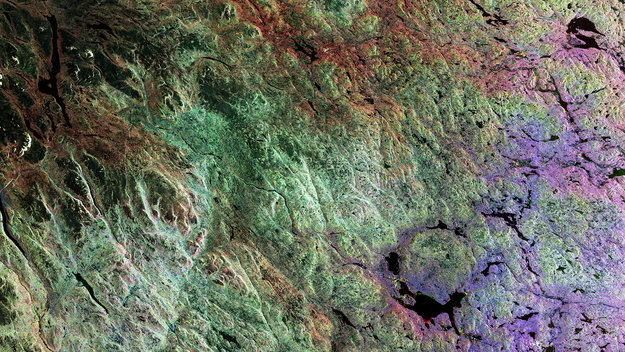
Earth observation image of the week: a Sentinel-1A image of the Siljan crater, also featured on the Earth from Space video programme
Colours of Sweden
5.2.2016 10:00 ESA Observing the Earth
Earth observation image of the week: a Sentinel-1A image of the Siljan Ring, also featured on the Earth from Space video programme
Colours of Sweden
5.2.2016 10:00 ESA Observing the Earth
Earth observation image of the week: a Sentinel-1A image of Sweden, also featured on the Earth from Space video programme
Labyrint na Marsu
5.2.2016 9:43 Český Kosmický PortálTento blok terénu na Marsu ohraničený složitým vzorem sesuvů a navátých dun představuje je malou část rozsáhlého labyrintu údolí, zlomů a planin.
Labyrint na Marsu
5.2.2016 9:43 Český Kosmický PortálTento blok terénu na Marsu ohraničený složitým vzorem sesuvů a navátých dun představuje je malou část rozsáhlého labyrintu údolí, zlomů a planin.
EGNOS protects GNSS timing
5.2.2016 9:32 European GNSS AgencyThe European GNSS Agency (GSA) announces that the EGNOS time service remained stable and properly synchronised to UTC time during a recent GPS timing anomaly on January 26th.
On the 26th of January, users of United States GPS system experienced timing issues after a number of GPS satellites broadcast incorrect UTC correction parameters. According to the US Air Force, the coordinated universal time message that was transmitted was off by 13 microseconds. During this anomaly EGNOS, which serves as an augmentation to the GPS, remained stable and properly synchronised to UTC.
European EGNOS has been providing its own time service since March 2011. The system generates its own time scale known as ENT (EGNOS Network Time), which obtains its information from atomic clocks across RIMS sites. EGNOS time is compared with UTC through the UTC time realisation of l’Observatoire de Paris, and the difference is transmitted in the EGNOS navigation message (MT12). EGNOS time information can be received via broadcast GEO satellite signals or via the EDAS service, which allows users to access EGNOS data online in real time.
EGNOS offers such a protection of their GNSS timing service to all SBAS users, across all application domains, including aviation, rail, maritime, surveying, agriculture, location based services and more.
Media note: This feature can be republished without charge provided the European GNSS Agency (GSA) is acknowledged as the source at the top or the bottom of the story. You must request permission before you use any of the photographs on the site. If you republish, we would be grateful if you could link back to the GSA website (http://www.gsa.europa.eu).

Nabídka nepotřebného majetku 02/2016
5.2.2016 9:18 ČÚZK - předpisy a opatření /Urady/Katastralni-urady/Katastralni-urady/Katastralni-urad-pro-Ustecky-kraj/Nabidky-majetku/Nabidka-nepotrebneho-majetku-02-2016Nabídka nepotřebného majetku 02/2016
5.2.2016 9:18 ČÚZK /Urady/Katastralni-urady/Katastralni-urady/Katastralni-urad-pro-Ustecky-kraj/Nabidky-majetku/Nabidka-nepotrebneho-majetku-02-2016Minulý týden jsme spolupořádali seminář Aliance pro bezpilotní letecký průmysl u SIT Plzeň
5.2.2016 9:01 UpVision Minulý týden jsme za Alianci pro bezpilotní letecký průmysl spolupořádali další setkání. Tentokrát jsme byli pozvaní k našemu velice aktivnímu členovi Správě informačních technologií v Plzni.Více fotografií zde:
https://plus.google.com/+UpvisionCz1/posts/XvqBmPPfq44
20160309GEODET-KP Kolín
5.2.2016 8:47 ČÚZK /Urady/Katastralni-urady/Katastralni-urady/Katastralni-urad-pro-Stredocesky-kraj/Katastralni-pracoviste/KP-Kolin/O-uradu/Aktuality/20151202REFERENT-KA-KATASTRU-NEMOVITOSTI-praco-(1)20160205GEODET a REFERENT-KP Kolín
5.2.2016 8:47 ČÚZK /Urady/Katastralni-urady/Katastralni-urady/Katastralni-urad-pro-Stredocesky-kraj/Katastralni-pracoviste/KP-Kolin/O-uradu/Aktuality/20151202REFERENT-KA-KATASTRU-NEMOVITOSTI-praco-(1)20160426-inzerát-Vrchní referent oddělení dokumentace-KP Kolín
5.2.2016 8:47 ČÚZK - předpisy a opatření /Urady/Katastralni-urady/Katastralni-urady/Katastralni-urad-pro-Stredocesky-kraj/Katastralni-pracoviste/KP-Kolin/O-uradu/Aktuality/20151202REFERENT-KA-KATASTRU-NEMOVITOSTI-praco-(1)20160205GEODET a REFERENT-KP Kolín
5.2.2016 8:47 ČÚZK - předpisy a opatření /Urady/Katastralni-urady/Katastralni-urady/Katastralni-urad-pro-Stredocesky-kraj/Katastralni-pracoviste/KP-Kolin/O-uradu/Aktuality/20151202REFERENT-KA-KATASTRU-NEMOVITOSTI-praco-(1)20160426-inzerát-Vrchní referent oddělení dokumentace-KP Kolín
5.2.2016 8:47 ČÚZK /Urady/Katastralni-urady/Katastralni-urady/Katastralni-urad-pro-Stredocesky-kraj/Katastralni-pracoviste/KP-Kolin/O-uradu/Aktuality/20151202REFERENT-KA-KATASTRU-NEMOVITOSTI-praco-(1)20160309GEODET-KP Kolín
5.2.2016 8:47 ČÚZK - předpisy a opatření /Urady/Katastralni-urady/Katastralni-urady/Katastralni-urad-pro-Stredocesky-kraj/Katastralni-pracoviste/KP-Kolin/O-uradu/Aktuality/20151202REFERENT-KA-KATASTRU-NEMOVITOSTI-praco-(1)20160309GEODET-KP Kolín
5.2.2016 8:42 ČÚZK - předpisy a opatření /Urady/Katastralni-urady/Katastralni-urady/Katastralni-urad-pro-Stredocesky-kraj/O-uradu/Aktuality/20151202REFERENT-KA-KATASTRU-NEMOVITOSTI-praco-(2)20160205GEODET a REFERENT-KP Kolín
5.2.2016 8:42 ČÚZK - předpisy a opatření /Urady/Katastralni-urady/Katastralni-urady/Katastralni-urad-pro-Stredocesky-kraj/O-uradu/Aktuality/20151202REFERENT-KA-KATASTRU-NEMOVITOSTI-praco-(2)20160205GEODET a REFERENT-KP Kolín
5.2.2016 8:42 ČÚZK /Urady/Katastralni-urady/Katastralni-urady/Katastralni-urad-pro-Stredocesky-kraj/O-uradu/Aktuality/20151202REFERENT-KA-KATASTRU-NEMOVITOSTI-praco-(2)20160309GEODET-KP Kolín
5.2.2016 8:42 ČÚZK /Urady/Katastralni-urady/Katastralni-urady/Katastralni-urad-pro-Stredocesky-kraj/O-uradu/Aktuality/20151202REFERENT-KA-KATASTRU-NEMOVITOSTI-praco-(2)referent katastru nemovitostí oddělení aktualizace
5.2.2016 8:34 ČÚZK - volná místa /Urady/Katastralni-urady/Katastralni-urady/Katastralni-urad-pro-Stredocesky-kraj/Volna-mista/referent-katastru-nemovitosti-oddeleni-aktualizacereferent katastru nemovitostí oddělení aktualizace
5.2.2016 8:34 ČÚZK - předpisy a opatření /Urady/Katastralni-urady/Katastralni-urady/Katastralni-urad-pro-Stredocesky-kraj/Volna-mista/referent-katastru-nemovitosti-oddeleni-aktualizacereferent katastru nemovitostí oddělení aktualizace
5.2.2016 8:34 ČÚZK /Urady/Katastralni-urady/Katastralni-urady/Katastralni-urad-pro-Stredocesky-kraj/Volna-mista/referent-katastru-nemovitosti-oddeleni-aktualizaceGEODET v oddělení aktualizace
5.2.2016 8:33 ČÚZK - předpisy a opatření /Urady/Katastralni-urady/Katastralni-urady/Katastralni-urad-pro-Stredocesky-kraj/Volna-mista/GEODET-v-oddeleni-aktualizaceGEODET v oddělení aktualizace
5.2.2016 8:33 ČÚZK /Urady/Katastralni-urady/Katastralni-urady/Katastralni-urad-pro-Stredocesky-kraj/Volna-mista/GEODET-v-oddeleni-aktualizaceGEODET v oddělení aktualizace
5.2.2016 8:33 ČÚZK - volná místa /Urady/Katastralni-urady/Katastralni-urady/Katastralni-urad-pro-Stredocesky-kraj/Volna-mista/GEODET-v-oddeleni-aktualizaceČSGK zve na jarní akce
5.2.2016 7:00 Česká asociace pro geoinformace Český svaz geodetů a kartografů zve na dvě jarní akce:Seminář Pozemkové úpravy XXII. - pořádá Spolek zeměměřičů Brno dne 27.4.2017 v Třebíči, HOTEL ATOM, Velkomeziříčská 640/45
52. geodetické informační dny - pořádá Spolek zeměměricu Brno ve dnech 1.-2.3.2017 v hotelu Avanti v Brně.
Spolek zeměměřičů Brno
si Vás dovoluje pozvat na celostátní
Zonace Krkonošského národního parku
5.2.2016 1:00 Cenia - Katalog metadat ČR - INSPIRE Prostorové vymezení jednotlivých zón ochrany přírody stanové Ministerstvem životního prostředí.Katalogová služba MIcKA
5.2.2016 1:00 Cenia - Katalog metadat ČR - INSPIRE Katalogová služba - implementace CSW-2.0.2Oznámení o vyhlášení výběrového řízení na služební místo ředitel Krajského pozemkového úřadu pro Kraj Vysočina
5.2.2016 0:00 Státní pozemkový úřadOznámení o vyhlášení výběrového řízení na služební místo ředitel Krajského pozemkového úřadu pro Jihočeský kraj
5.2.2016 0:00 Státní pozemkový úřadOznámení o vyhlášení výběrového řízení na služební místo ředitel Krajského pozemkového úřadu pro Ústecký kraj
5.2.2016 0:00 Státní pozemkový úřadOznámení o vyhlášení výběrového řízení na služební místo ředitel Krajského pozemkového úřadu pro Středočeský kraj
5.2.2016 0:00 Státní pozemkový úřadOznámení o vyhlášení výběrového řízení na služební místo ředitel Krajského pozemkového úřadu pro Moravskoslezský kraj
5.2.2016 0:00 Státní pozemkový úřadAnnouncing the Bentley Open Roads Navigator App
4.2.2016 17:00 Bentley SystemsPress Coverage
AEC Cafe
Read the article2015 Year in Review for AEC Technology
4.2.2016 16:59 Bentley SystemsPress Coverage
AEC bytes
Read the articleRada - Kontrolor oddělení metodiky a kontroly
4.2.2016 14:28 ČÚZK - volná místa /Urady/Katastralni-urady/Katastralni-urady/Katastralni-urad-pro-Karlovarsky-kraj/Uredni-deska/Oznameni-a-jina-uredni-sdeleni/Volna-mista/Rada-Kontrolor-oddeleni-metodiky-a-kontrolyRada - Kontrolor oddělení metodiky a kontroly
4.2.2016 14:28 ČÚZK /Urady/Katastralni-urady/Katastralni-urady/Katastralni-urad-pro-Karlovarsky-kraj/Uredni-deska/Oznameni-a-jina-uredni-sdeleni/Volna-mista/Rada-Kontrolor-oddeleni-metodiky-a-kontrolyRada - Kontrolor oddělení metodiky a kontroly
4.2.2016 14:28 ČÚZK - předpisy a opatření /Urady/Katastralni-urady/Katastralni-urady/Katastralni-urad-pro-Karlovarsky-kraj/Uredni-deska/Oznameni-a-jina-uredni-sdeleni/Volna-mista/Rada-Kontrolor-oddeleni-metodiky-a-kontrolyPředstavený - Ředitel odboru katastrálního operátu
4.2.2016 14:26 ČÚZK /Urady/Katastralni-urady/Katastralni-urady/Katastralni-urad-pro-Karlovarsky-kraj/Uredni-deska/Oznameni-a-jina-uredni-sdeleni/Volna-mista/Predstaveny-Reditel-odboru-katastralniho-operatuPředstavený - Ředitel odboru katastrálního operátu
4.2.2016 14:26 ČÚZK - předpisy a opatření /Urady/Katastralni-urady/Katastralni-urady/Katastralni-urad-pro-Karlovarsky-kraj/Uredni-deska/Oznameni-a-jina-uredni-sdeleni/Volna-mista/Predstaveny-Reditel-odboru-katastralniho-operatuPředstavený - Ředitel odboru katastrálního operátu
4.2.2016 14:26 ČÚZK - volná místa /Urady/Katastralni-urady/Katastralni-urady/Katastralni-urad-pro-Karlovarsky-kraj/Uredni-deska/Oznameni-a-jina-uredni-sdeleni/Volna-mista/Predstaveny-Reditel-odboru-katastralniho-operatuPředstavený - Ředitel Katastrálního pracoviště Karlovy Vary
4.2.2016 14:24 ČÚZK /Urady/Katastralni-urady/Katastralni-urady/Katastralni-urad-pro-Karlovarsky-kraj/Uredni-deska/Oznameni-a-jina-uredni-sdeleni/Volna-mista/Predstaveny-Reditel-Katastralniho-pracoviste-KarloPředstavený - Ředitel Katastrálního pracoviště Karlovy Vary
4.2.2016 14:24 ČÚZK - volná místa /Urady/Katastralni-urady/Katastralni-urady/Katastralni-urad-pro-Karlovarsky-kraj/Uredni-deska/Oznameni-a-jina-uredni-sdeleni/Volna-mista/Predstaveny-Reditel-Katastralniho-pracoviste-KarloPředstavený - Ředitel Katastrálního pracoviště Karlovy Vary
4.2.2016 14:24 ČÚZK - předpisy a opatření /Urady/Katastralni-urady/Katastralni-urady/Katastralni-urad-pro-Karlovarsky-kraj/Uredni-deska/Oznameni-a-jina-uredni-sdeleni/Volna-mista/Predstaveny-Reditel-Katastralniho-pracoviste-KarloPředstavený - Ředitel Katastrálního pracoviště Sokolov
4.2.2016 14:23 ČÚZK - předpisy a opatření /Urady/Katastralni-urady/Katastralni-urady/Katastralni-urad-pro-Karlovarsky-kraj/Uredni-deska/Oznameni-a-jina-uredni-sdeleni/Volna-mista/Predstaveny-Reditel-Katastralniho-pracoviste-SokolPředstavený - Ředitel Katastrálního pracoviště Sokolov
4.2.2016 14:23 ČÚZK - volná místa /Urady/Katastralni-urady/Katastralni-urady/Katastralni-urad-pro-Karlovarsky-kraj/Uredni-deska/Oznameni-a-jina-uredni-sdeleni/Volna-mista/Predstaveny-Reditel-Katastralniho-pracoviste-SokolPředstavený - Ředitel Katastrálního pracoviště Sokolov
4.2.2016 14:23 ČÚZK /Urady/Katastralni-urady/Katastralni-urady/Katastralni-urad-pro-Karlovarsky-kraj/Uredni-deska/Oznameni-a-jina-uredni-sdeleni/Volna-mista/Predstaveny-Reditel-Katastralniho-pracoviste-SokolPředstavený - Ředitel Katastrálního pracoviště Cheb
4.2.2016 14:22 ČÚZK /Urady/Katastralni-urady/Katastralni-urady/Katastralni-urad-pro-Karlovarsky-kraj/Uredni-deska/Oznameni-a-jina-uredni-sdeleni/Volna-mista/Predstaveny-Reditel-Katastralniho-pracoviste-ChebPředstavený - Ředitel Katastrálního pracoviště Cheb
4.2.2016 14:22 ČÚZK - volná místa /Urady/Katastralni-urady/Katastralni-urady/Katastralni-urad-pro-Karlovarsky-kraj/Uredni-deska/Oznameni-a-jina-uredni-sdeleni/Volna-mista/Predstaveny-Reditel-Katastralniho-pracoviste-ChebPředstavený - Ředitel Katastrálního pracoviště Cheb
4.2.2016 14:22 ČÚZK - předpisy a opatření /Urady/Katastralni-urady/Katastralni-urady/Katastralni-urad-pro-Karlovarsky-kraj/Uredni-deska/Oznameni-a-jina-uredni-sdeleni/Volna-mista/Predstaveny-Reditel-Katastralniho-pracoviste-ChebPředstavený - Ředitel kanceláře ředitelky KÚ
4.2.2016 14:19 ČÚZK - volná místa /Urady/Katastralni-urady/Katastralni-urady/Katastralni-urad-pro-Karlovarsky-kraj/Uredni-deska/Oznameni-a-jina-uredni-sdeleni/Volna-mista/Predstaveny-Reditel-kancelare-reditelky-KUPředstavený - Ředitel kanceláře ředitelky KÚ
4.2.2016 14:19 ČÚZK - předpisy a opatření /Urady/Katastralni-urady/Katastralni-urady/Katastralni-urad-pro-Karlovarsky-kraj/Uredni-deska/Oznameni-a-jina-uredni-sdeleni/Volna-mista/Predstaveny-Reditel-kancelare-reditelky-KUPředstavený - Ředitel kanceláře ředitelky KÚ
4.2.2016 14:19 ČÚZK /Urady/Katastralni-urady/Katastralni-urady/Katastralni-urad-pro-Karlovarsky-kraj/Uredni-deska/Oznameni-a-jina-uredni-sdeleni/Volna-mista/Predstaveny-Reditel-kancelare-reditelky-KUEarth from Space
4.2.2016 14:00 ESA Observing the Earth
Join us Friday, 5 February, at 10:00 CET for the ‘Earth from Space’ video programme. This week features a Sentinel-1A image of the Siljan crater in Sweden
Nabídka zaměstnání/dlouhodobé brigády v geodetické kanceláři
4.2.2016 12:52 Blogující geomatici - FAV ZČUProblemReport v moldavské televizi
4.2.2016 12:43 HrdličkaProblemReport byl v Moldavsku spuštěn v rámci projektu České rozvojové agentury. Reportáž je ke zhlédnutí na webu PUBLIKA MD.
The post ProblemReport v moldavské televizi appeared first on HRDLIČKA spol. s r.o. - komplexní služby v oblasti geodézie.



